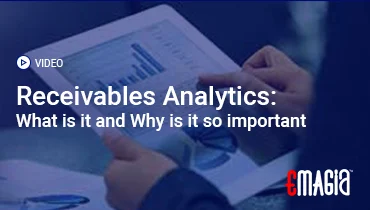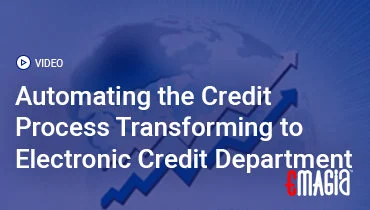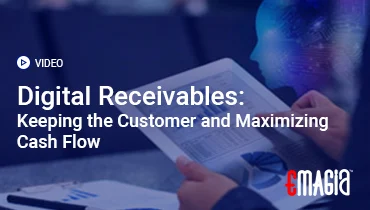Navigating the world of financial automation can feel overwhelming. You know that a modern system is the key to solving your cash flow problems, but with countless vendors promising the same thing, how do you make the right choice? Selecting the best straight-through processing (STP) software is a high-stakes decision that will impact your operations for years to come. It’s not just about finding a tool; it’s about choosing a partner that can truly deliver on the promise of a zero-touch financial environment.
This comprehensive guide will arm you with the essential knowledge you need to evaluate and select the perfect solution. We’ll go beyond the flashy demos and marketing jargon to uncover what truly matters—from core functionality and technical capabilities to vendor support and return on investment. Let’s dive deep into the criteria for choosing cash application automation software that will transform your business.
Phase 1: Your Internal Audit – Before the Shopping Begins
Before you even look at a single product, you must have a crystal-clear understanding of your own needs. An intelligent purchase starts with a thorough self-assessment.
Identifying Your Biggest Accounts Receivable Pain Points
Every business is unique. Start by mapping out your current cash application process. Is your team buried under paper checks? Are they spending hours trying to find a matching remittance email? Is a single, complex customer payment holding up your entire cash flow? Document these specific problems. Identifying your pain points is the first step toward finding a solution that actually solves them.
Defining Your “Must-Have” Features and Desired Outcomes
Create a list of essential features. For example, is integrating with your specific ERP a non-negotiable? Do you need a system that can handle international payments and currency conversions? Be specific. This list will serve as your scorecard when evaluating different platforms.
Phase 2: The Key Features of a World-Class STP Solution
When you begin to evaluate software, look for these non-negotiable features. They represent the cutting edge of financial process automation and are what separate a good solution from a great one.
Intelligent Data Ingestion from All Channels
A modern solution should be able to automatically ingest payment and remittance data from every conceivable source without a hitch. This includes traditional sources like bank lockboxes and EDI files, as well as unstructured sources like email attachments and customer portals. The system should be able to read and understand different formats with high accuracy, eliminating the need for any manual data entry.
AI and Machine Learning: The Engine of STP
The days of simple, rule-based systems are over. A truly effective STP solution is powered by AI and machine learning. These technologies allow the software to learn from historical data and get smarter over time. It can handle complex, messy data and accurately match payments to invoices even when key information is missing, vague, or contains discrepancies. This is how you achieve exceptionally high zero-touch cash posting rates.
Automated Exception Handling and Auditing
No system can reach 100% STP. But what happens to the remaining transactions is just as important. The best software will not only flag exceptions but also intelligently route them to the right person. It should provide a single, clean view of the exception, along with all the relevant data needed to resolve it quickly. It should also maintain a detailed audit trail of every action for compliance and security.
Phase 3: Evaluating Your Potential Technology Partner
The software is only part of the solution; the vendor is the other. A great vendor will be a true partner in your automation journey.
Assessing Implementation and Support
How much internal IT effort is required to implement the solution? A good vendor will provide a robust implementation team that handles most of the technical heavy lifting, minimizing the burden on your internal resources. Ask about their post-implementation support model. Is there a dedicated support team? What is their response time for critical issues?
Understanding Scalability and Roadmap
Your business will grow, and your software should be able to grow with it. Ask the vendor about their product roadmap. How do they plan to evolve their product? Are they investing in new technologies like generative AI? This foresight is crucial for a long-term strategic partnership.
Security and Compliance
When dealing with sensitive financial data, security is paramount. Ensure the vendor’s platform is compliant with all relevant industry standards and certifications. Ask them to detail their security protocols and what measures they have in place to protect your data from breaches and fraud.
How Emagia’s Platform Redefines STP for a Digital Age
Choosing an STP software can feel like a daunting task, but platforms like Emagia make the decision simple. Emagia’s AI-powered solution is built from the ground up to address the complexities that block traditional systems from achieving true STP. Their technology can automatically extract and unify data from every conceivable remittance source, no matter how messy or unstructured, including bank files, emails, and PDFs. It uses advanced machine learning to achieve an industry-leading match rate, freeing your team from the manual labor of cash application. Emagia’s platform is designed to be a complete financial automation suite, not just a point solution. It seamlessly integrates with your existing ERP to provide a unified, real-time view of your cash position, transforming your accounts receivable department from a reactive cost center into a strategic, data-driven profit engine.
What is the difference between an STP solution and cash application software?
While cash application software automates the process of matching payments to invoices, a true straight-through processing solution aims for end-to-end automation, often extending to other financial processes beyond just cash application.
How do I calculate the ROI of an STP software?
You can calculate the ROI by quantifying the time and cost savings from reduced manual labor, the financial benefits of faster cash flow, and the avoidance of errors. A good vendor should be able to help you with a detailed ROI assessment.
Can my small business benefit from STP software?
Yes. While larger enterprises have traditionally been the main users of STP software, new, cloud-based solutions have made the technology more accessible and affordable for small and medium-sized businesses.
How important is AI in my choice of STP software?
AI is extremely important. It is the key to handling the complex, unstructured data that makes achieving a high rate of straight-through processing impossible with older, rules-based systems. AI enables the software to learn, adapt, and improve its match rates over time.



